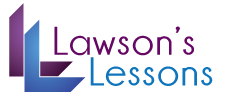Look Look Look!
Personal Appearance
Objective: Students will contrast appropriate and inappropriate appearances and identify good appearances in public speaking.
Materials: Teacher – a variety of pictures of people (magazines, newspapers)
Students – a piece of paper, a pencil
Steps:
- Do a short game such as brainstorming in order to remember the elements of good and bad appearances.
- Divide students into three groups
- Explain the rule of the game and write ‘good appearance’ on the whiteboard
- Students of each group write elements of good appearances on the whiteboard one by one and within 3 minutes, the group which writes more elements than the other groups wins.
- Do the same thing with ‘bad appearances’
- Give some prizes such as chocolates to the students who won
- Compare people in magazines and newspapers in order to identify proper personal appearances
- Divide students into pairs
- Give a magazine or newspaper to each pair
- Half of the pairs look for a proper personal appearance and next half look for a improper personal appearance
- Each pair lists up 3 reasons why they think the appearance is proper or improper
- Share their opinions with the class
- Think of the situation in which they are a public speaker
- Hand a paper with a hand-drawn stick person
- Students draw what appearance they should have in front of people
- Exchange papers with the students near them
- Talk about why they choose to draw that appearance with the other students
Result: Students will construct the image of proper and improper personal appearances.
Yuriko Onishi
Speech 400
Dress to Impress!
Personal Appearance
OBJECTIVE: Given examples of clothing, students will be able to correctly identify and explain which examples are considered professional dress.
MATERIALS: Pen/pencil and paper. Instructor must have several examples of both correct and incorrect professional dress for each group of students. Instructor may make a power point presentation with the examples to go over in class.
STEPS:
1. Divide the class into groups of three or four.
2. Hand out envelope including pictures of different clothing and personal appearance.
3. Have students put the clothing photos in categories of professional dress and non professional dress (they have had a previous lesson).
4. Have the students discuss as a group why they separated the clothing the way they did.
5. As a class, discuss the answers.
RESULTS: Students will be able to identify professional dress and know the importance of personal appearance. Students will use this lesson to have a professional personal appearance when giving speeches in class.
Amanda Davidson
September 9, 2009
Personal Appearance
All Dressed Up With Somewhere to Go
Objective:
Within a 50 minute class period, students will write a “how to” magazine article to compare and contrast the do’s and don’ts of personal appearance during public speaking.
Materials:
Magazines, construction paper, markers, colored pencils, scissors, glue sticks, and any other creative supplies you can find.
Steps:
1. First, start off explaining the importance of personal appearance during public speaking. Ask if the students would have had a different opinion of you at first glance if you would have came in pajama pants and a T-shirt. Of course. Explain that different situations call for different attire. Give examples of some different situations and explain what type of attire is best for the occasion. Besides mentioning, tie and color choice, skirt length and shoe choice, don’t forget to mention the importance of hygiene, jewelry, tattoos and piercings, hair styles and colors, and so on.
2. After discussing appropriate attire ask the students to use the magazines and other materials to make a magazine article explaining to their non-existent readers the do’s and don’t of personal appearance for public speaking. Explain that the requirements are:
-On construction paper mount two pieces of computer paper ( as if that was their layout in the magazine.
-A catchy heading
-An article on the do’s and don’t of personal appearance for public speaking
– and two pieced together people from separate magazine cut outs (made up of at least four different pieces for each person) One of those people demonstrating what to wear and the other demonstrating what not to wear.
3. Give the students the rest of the class period to work on their layouts.
4. When the students are finished they can hang their layouts on the wall around the room neatly. We will discuss them during the next class period.
Results:
The student can identify the appropriate personal appearance for different occasions, especially speaking at a public event.
